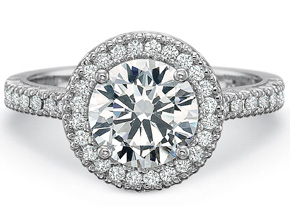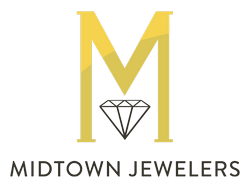
Buying an engagement ring is a big step for most couples, as well as a big investment. Most people like to research investments before they make them, which is why we’ve put together this short primer to help guide you through the process. Since most guides focus on the 4Cs, we’ve gone in a different direction to explain the different styles and options available.
Metals
This is usually the first decision couples make. Usually one or the other has a firm opinion on the color of metal that the wedding set should be — either traditional yellow gold or a silvery metal of some kind. Within the silvery metals there are several options: white gold, platinum, palladium, or titanium. Titanium is silver-gray in its natural state, but can also be polished black, which leads us to more non-traditional metals. If titanium isn’t your style, black gold is also a possibility. In recent years, rose gold has become popular as well.
Band Profile
There are many types of bands to choose from as well. Not all bands will be possible with every style of ring, but you should be aware of the broad categories. A court band is probably the most comfortable and traditional style of ring. If you cut a cross-section of the band, it would look like a flattened oval. This is called the ring “profile.”
The D profile is another common style. It is either flat or only slightly curved on the inside of the ring, but sports a distinctive domed exterior. A flat court profile is the opposite of the D profile; it is flat on the outside and curved on the inside for comfort.A flat profile is flat on both the inside and the outside, and the edges. If you cut a cross-section, it would look like a rectangle. This is a very versatile profile because the ring can look very different depending on the thickness and width of the metal. A minor variation on this is the beveled profile, where the corners have been sliced off. In profile, then, the a beveled ring looks octagonal.
